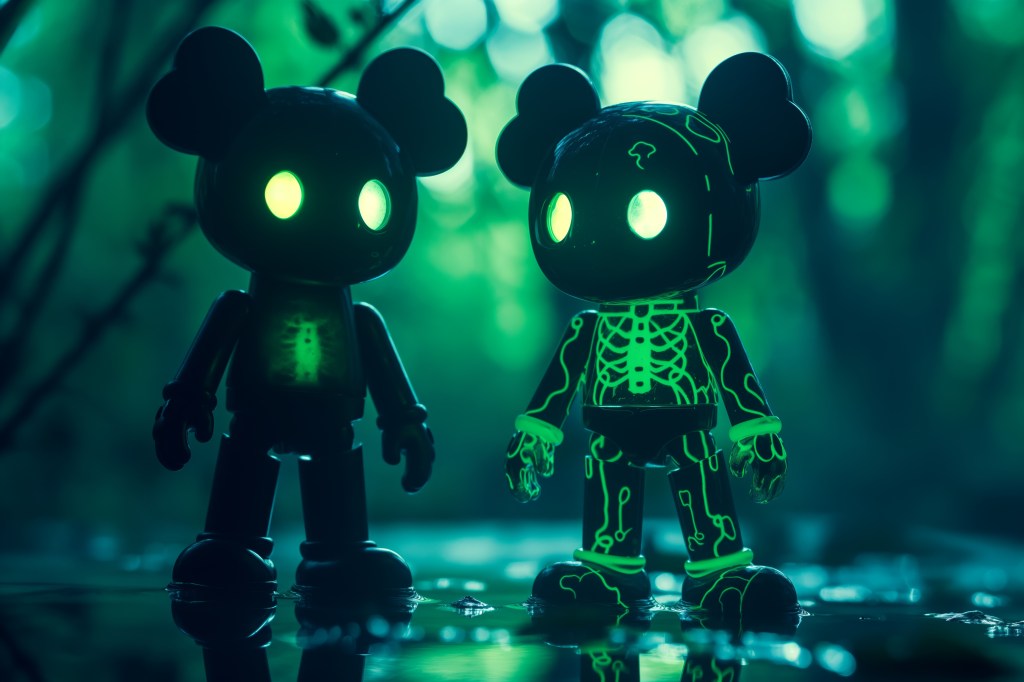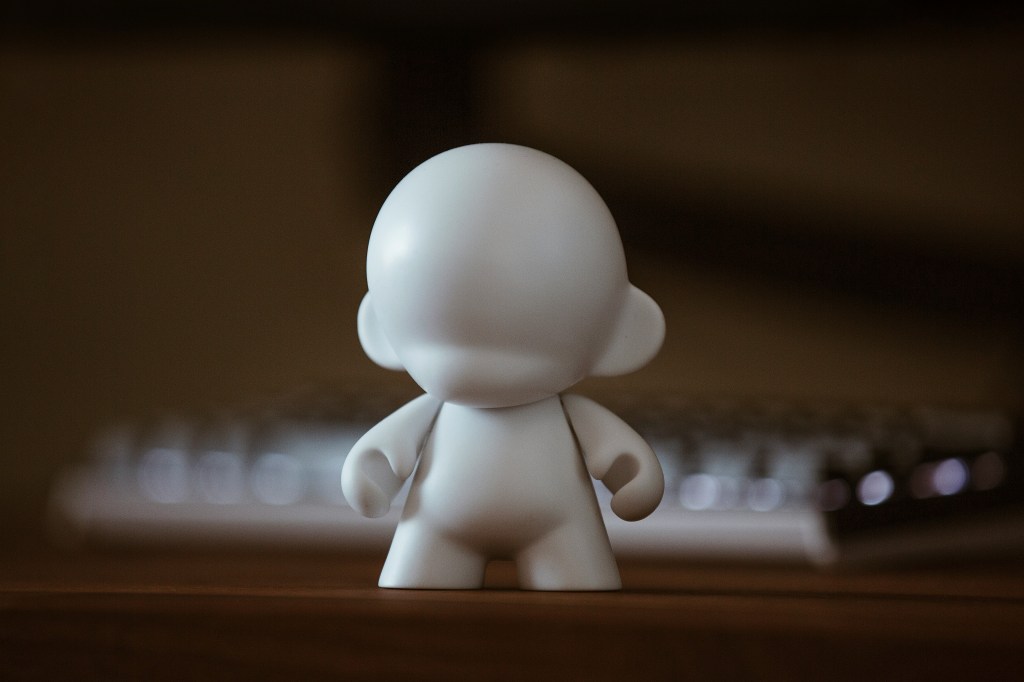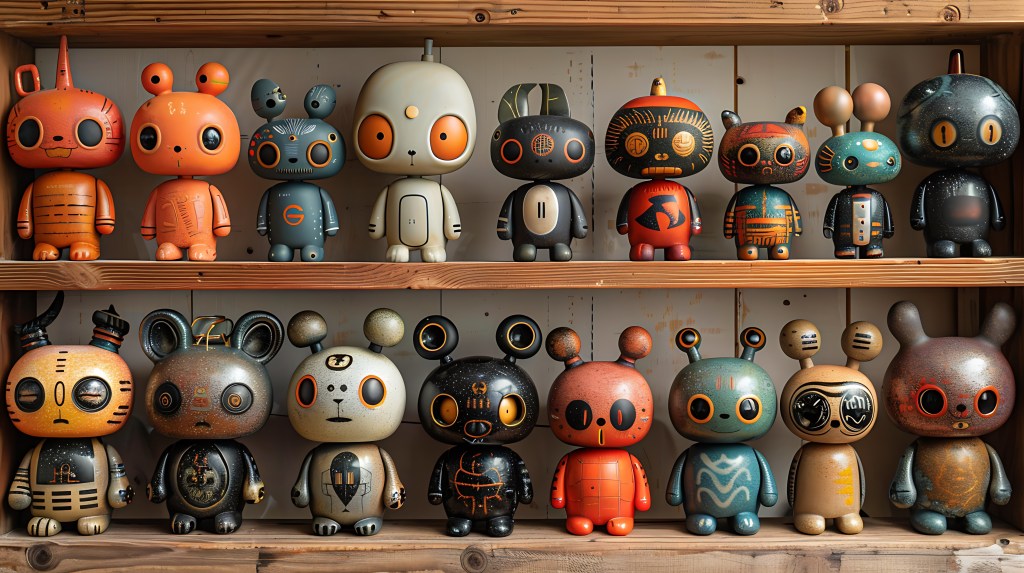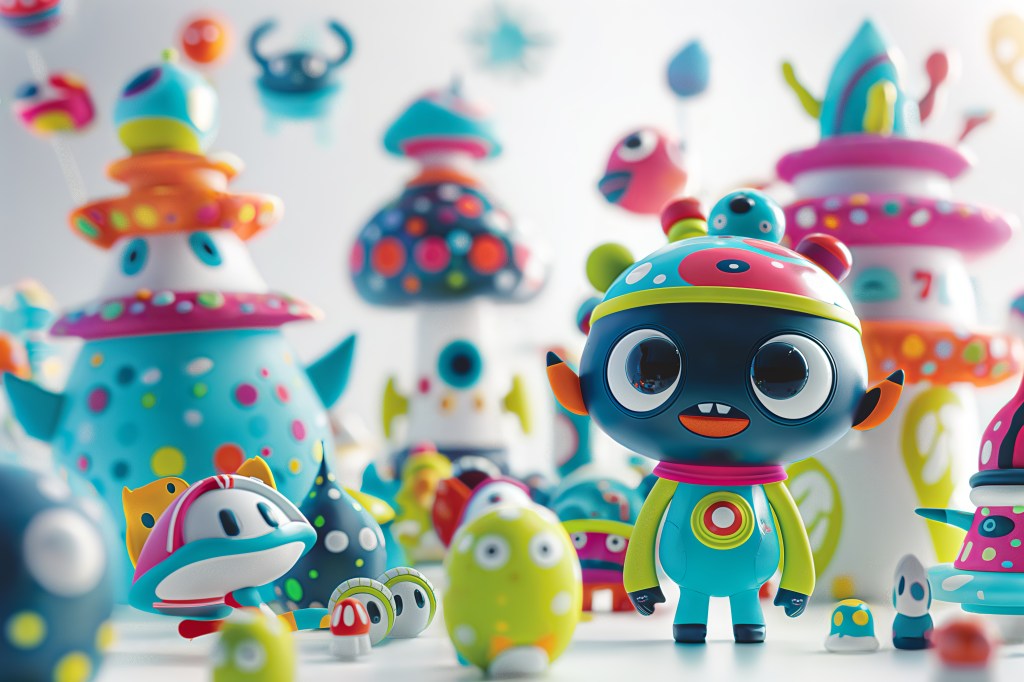
Limited Edition Designer Toys: Art Meets Collecting

Limited Edition Designer Toys: Art Meets Collecting
Introduction to Limited Edition Designer Toys
Drawing from the recent surge in interest for unique art niches, the selection of limited edition designer toys stands out remarkably. These designer toys, often referred to as urban vinyl, encapsulate an imaginative design ethos combined with the allure of exclusivity, sparking a burgeoning love among collectors and art enthusiasts worldwide. This fascination delves deep into the experience of owning something more than a mere collectible—it’s about possessing a piece of art that embodies a fusion of artistic expression and the rich culture of collectibles.
The allure of these amazing collectibles, particularly urban vinyl toys, extends beyond their visual charm to their potential to challenge and expand the boundaries of traditional art. This transformation attracts a fresh wave of enthusiasts eager to delve into the exciting nexus of art and collectible culture, showcasing the vibrant dynamic between these realms.

The Intersection of Art and Collectibles
Designer toys have bridged the gap between artistic expression and collectible culture, creating an intriguing niche that attracts both art enthusiasts and collectors alike. These unique pieces blend fine art aesthetics with street art elements and have started to command significant attention and respect within the art community. Despite the art world’s initial hesitation to embrace vinyl toys, the growing trend has proven its worth and established its place as a legitimate form of contemporary art.
Evolution and impact
The concept of designer and art toys isn’t entirely new. Gaining popularity in the late 90s and early 2000s, the movement found its origins in Asia, specifically Tokyo, Japan. These toys, primarily made of vinyl, exhibit a wide range of popular culture motifs and figures, resonating with a broad audience. One iconic example is the “Kid Hunter” toy, a pirate figure referencing the well-known American cereal mascot, Captain Crunch. This creative blend showcases how these art toys playfully navigate the boundary between commercialism and art.
Artists like Ron English, Krank Kozik, Julie West, Junko Mizuno, and Takashi Murakami have been pivotal in increasing the popularity of the art toy movement. Their work, often seen as avant-garde, challenges traditional notions of what can be considered art. Initially regarded by the art community as rudimentary, the intricate craftsmanship and conceptual depths of these toys have gradually been recognized. Some limited edition vinyl pieces have even fetched millions at auctions, highlighting the increasing value and interest in this art form.
The rise of designer and art toys illustrates a broader shift in the art world towards recognizing and appreciating forms of art that defy traditional categories. As these vinyl toys blur the lines between fine art and pop culture, they offer a new perspective on artistic expression. The allure of these pieces signifies their aesthetic and monetary value and also spotlights a cultural movement that embraces innovation, nostalgia, and collecting.

The Appeal of Exclusivity in Designer Toys
The world of collectibles has always held an allure for enthusiasts and investors alike, but the recent surge in popularity of exclusive designer toys has taken this fascination to new levels. Driven by exclusivity and artistry involved in their creation, limited edition toys are appealing and highly sought after in the collector’s market. These pieces capture the imagination and represent a collaboration between artists and manufacturers.
High demand collectibles
But what exactly makes these designer toys so irresistible to collectors and investors? The appeal lies in its scarcity. Since these pieces are produced in small quantities, each piece is a rare collectible. This scarcity, couple with high demand, has led to soaring price appreciations in the secondary market. This not only attracts collectors who have a deep appreciation for the art, but also those who are looking to capitalize on the financial potential.
The craftsmanship and artistry involved in creating these designer toys cannot be understated. Collectors are drawn to the intricate designs and each piece tells a story that speaks volumes about the artist’s vision. The artistic value distinguishes these toys from mass-produced collectibles and offers a deeper connection between the collector and the art piece.
However, the influx of investors into the market has sparked a debate about the sustainability of this trend. The fear is that prioritizing financial gain over artistic appreciation could potentially harm the designer toy ecosystem. Critics argue that investors should be educated on the artistry and craftsmanship behind these toys, encouraging them to view the artistic worth as much as the investment potential. By fostering a greater understanding of the art behind designer toys, the hope is to create a more sustainable environment that benefits both artists and collectors. Moreover, collaboration between investors and artists is crucial to foster inclusive and fair trading environments.
Renowned Artists in the Designer Toy Industry
Designer toys have captivated audiences worldwide, thanks to the innovative efforts of creative artists. These artists have not only contributed significantly to the designer toy market but have also revolutionized how we perceive toys – turning them from mere playthings into coveted pieces of art. This exploration into the world of designer toys will spotlight influential artists and their creations, which have left a mark on their industry.
Influential toy designers
Paul Bundintz sparked a revolution in the designer toy world with the launch of Kidrobot in 2002. What began as a niche collectible toy company quickly turned into a cornerstone of the designer toy landscape, known for its unique creations. Kidrobot’s success laid the groundwork for other artists like KAWS, whose designs fetched millions at auctions. KAWS is particularly known for his “Companion” figures that merged “morbid but cute” designs, making waves to the extent that his collections sold by MoMA in 1017 sold for $200 each, famously crashing the museum’s shop website upon release.
The designer toy medium is diverse, with the first wave of renowned artists bringing a range of backgrounds and styles. Takashi Murakami, for example, infused his works with a vibrant palette inspired by otaku culture and created pieces that embraced cuteness and violence. In contrast, Ron English utilized pop culture and brand imagery in a subversive twist on “culture jamming,” creating uncanny juxtapositions that challenged viewers’ perceptions. Artists like Kranz Kozik, Jason Freeney, Junko Mizuno, and Julie West followed suit, each contributing their unique voice and style to the designer toy landscape. For example, the iconic Frostbite Fauna by Julie West, and the tokidoki Japanese toys, are excellent illustrations of art toys.
The second wave of designer toy artists, including KAWS, Joan Cronella, Cote Escriva, and others, have leveraged the power of social media to redefine engagement in the art toy community. With large online followings, these artists have managed to increase the popularity and exclusivity of their creations and make their art more accessible to the public.
The Artistry Behind Designer Toys
Diving into the world of designer toys unveils a fascinating journey from a mere concept to a tangible piece of artistry. This process transforms imaginative ideas to unique, collectible items. Designer toy artistry is not just about making toys, it brings to life characters and themes that resonate with the creator and audience. Whether you’re a fan of the art or are an aspiring creator, understanding the depth of work involved in this process can enhance your appreciation for these miniature works of art.
Creative process
The journey of creating your own vinyl toy begins with an idea. This could be anything from your favorite animal to a character that’s neem living in your imagination. It’s about letting your creativity flow and sketching out rough ideas without worrying about perfection. The evolution from a concept to a refined product is a progressive process that benefits from flexibility and an openness to revisiting and reshaping initial ideas.
The development stage is key for refining ideas, revisiting old sketches, and brainstorming new concepts. Turnaround sketches serve as the blueprint for the final design, guiding the production process. This process is a testament to the creative spirit that fuels designer toy artistry.
Your sketches serve as the blueprint for your design, detailing every angle of your character. This step is instrumental in transitioning from a rough concept to a detailed design ready for production. Whether you prefer traditional sketching or digital tools, the goal is to create a clear guide for crafting your toy.
If you’re considering sending your pieces for factory manufacturing, it’s important to copyright your character. Equally important is to shop around and get price quotes for the cost of the project, as pricing varies by material, size, complexity, and packaging.
If you’d rather take the DIY approach, you can create your own molds, mockups, and sculptures of your design using popular materials such as wax, plush, or resin.
This process is not only about the discovery a personal vision but also about contributing to the vibrant, ever-evolving world of designer toy artistry. Each step, from conceiving an idea to the final product, is a testament to the creative spirit that fuels this unique form of expression.

Building a High-End Designer Toy Collection
To start and grow a premium designer toy collection, it’s important to take a strategic approach. Look for unique designs with limited production runs and connect with other collectors to stay informed. Research art styles, artists, and themes that speak to you.
It’s essential to prioritize quality over quantity, focusing on pieces with exceptional craftsmanship and historical significance. Always verify authenticity and condition before making a purchase and remember that investing in designer toys is a long-term commitment.
Following your favorite artists on social media and engaging with their content can help you learn about limited releases and gain valuable tips.
One unique aspect of the designer toy realm is the concept of “blind box series,” where artists design an assortment of characters packaged in mystery boxes. This creates an element of surprise and excitement for collectors and adds a fun twist to the creative process for designers. This concept mirrors the allure found in collecting items from beloved shows or series, where the mystery of the box adds an extra layer of engagement with the content.
By following these strategies, you can build a rewarding collection that brings both personal satisfaction and potential financial gain.

Preserving and Showcasing Your Collection
When it comes to preserving and showcasing your designer toys, there’s more to it than just keeping them on a shelf. Understanding the best practices for maintaining and displaying your collectibles can elevate their artistic value and ensure they remain in pristine condition over the years. Including the option to store these items properly plays a crucial role in safeguarding their condition and aesthetic appeal.

Collectible Toy Maintenance
Whether you’re a seasoned collector or new to the world of designer art toys, knowing how to preserve these pieces can enhance your collection, making each toy stand out as a masterpiece in its own right. From selecting the right display cases that protect against dust and sunlight to understanding the importance of regular maintenance, we’re diving into effective strategies to showcase and store your designer collections.
Embracing these tactics not only honors the creativity behind each piece but transforms your space into a vibrant gallery of your cherished mementos. Proper storage solutions, such as climate-controlled environments or special protective cases, can be as crucial as the display itself, ensuring that your collectibles are kept in optimal conditions for years to come.
Sources
https://www.artsy.net/article/artsy-editorial-collectible-designer-toys-art-form
https://medium.com/@ArToys/striking-a-balance-passion-investment-and-success-in-the-designer-toy-market-023f6dd30e41#:~:text=The%20allure%20of%20designer%20toys,appreciation%20in%20the%20secondary%20market
https://www.artsharesales.com/en/art-toys-the-new-trend-for-art-collectors/#:~:text=Internationally%20renowned%20artists%20such%20as,go%20on%20to%20become%20part
https://makezine.com/article/maker-news/designing-a-vinyl-toy-with-joe-ledbetter/
https://medium.com/@ArToys/how-to-start-collecting-art-toys-c9eb082cd18f
About Collectibles Insurance Services
Collectibles Insurance Services has been protecting collections since 1966 and all coverage is provided by a carrier with a group rating of “A” (Excellent) by AM Best, the leading rating agency for the insurance industry.
Comprehensive coverage includes, but is not limited to: accidental breakage, burglary, fire, flood, loss in the mail, theft, natural disasters, and other causes of loss unless specifically excluded from the policy. Deductibles start at $0 for collector policies and we provide coverage for the market value of your collection for losses in excess of $50.
Additionally the protection extends At home and away, and we don't require collection itemization and serial number nor extensive paperwork and red tape.
